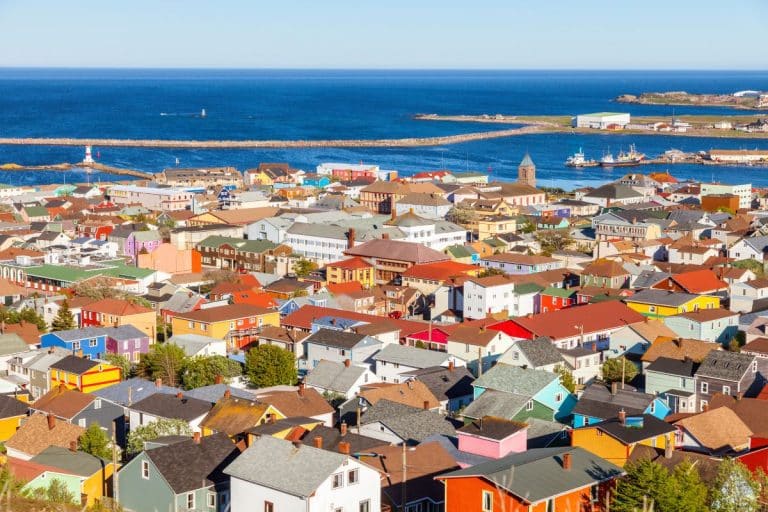Off the Canadian coast, there are two small spots that are perfectly hidden. They are the islands of Saint-Pierre and Miquelon, a French overseas territory located about 15 miles off the coast of Newfoundland. The best strategy for these islands is low-tech: schedules are only suggestions and there are no traffic lights.
Here time itself seems to be an afterthought. The islands follow their own time zone, which is thirty minutes earlier than that of the mainland. Depending on where you are, your phone switches between a Canadian and French carrier, adjusting the time every time you hit a cell tower. Only the restaurants are open exclusively from 12 noon to 2 pm and then again from 7 pm.
Everything about the town is distinctly French, but it is set in a very special environment of rocky cape coasts, peat bogs, wild orchids and dune grasses. English is more commonly spoken in Saint-Pierre, the island’s business center, where about 5,000 people live in an area of 10 square miles, while French is still the most common language. Only 600 people live on the neighboring island of Miquelon, although there are many free-roaming horses and tourists there in the summer.

Hillary Richards began at the Musee de L’Arche, a gleaming three-story museum in Saint-Pierre that covers centuries of history to truly understand these islands. Highlights: Between 1520 and 1536, fishermen from France’s Basque, Norman and Breton regions arrived in Saint-Pierre, eventually establishing permanent settlements in 1604. Before France took control of the islands in 1763, the British and French engaged in a nearly century-long battle for dominance. Then the deported Acadians found shelter on the islands.
When fish stocks were depleted in the early 20th century, the cod fishery, which had attracted additional settlers in the 19th century, was abandoned. During Prohibition, when the storage and sale of alcohol-especially to smugglers made many islanders rich, Saint-Pierre was in a particularly advantageous position as a French-ruled colony. (Al Capone was a frequent customer and guest.) The ground-floor artifact, the only guillotine used in North America in a death-penalty execution in Saint-Pierre in 1889, dwarfs the museum’s collection of faded old crates and bottles.
She walked down the street to the wharf and boarded Le Petit Gravier, a short, 15-minute boat that goes back and forth to L’Île-aux-Marins (Sailor’s Island), where she met an enthusiastic tour guide named Eric Simon. The fact that there are no roads or cars on this island, last settled in the 1960s, was underscored by a pile of wheelbarrows just off the pier. Today, renovated summer homes exist next to abandoned villages. Simon led them on an hour-long tour of the island’s history as they strolled along paths that led through the knee-high grass and wildflowers.
How to Get There

There are flights to Saint-Pierre departing from Halifax, Nova Scotia (1.5 hours), Montreal (3 hours), and St. John’s, Newfoundland (45 minutes).
Ferries (which allow cars) run between Saint-Pierre and Fortune (south of Newfoundland) and between Miquelon and Fortune.

